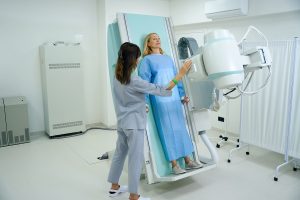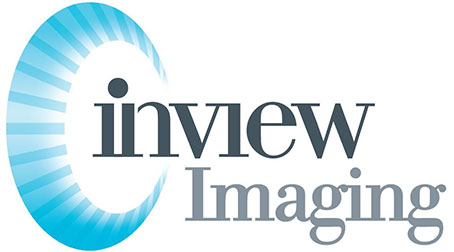3D mammography, also known as digital mammogram, is changing the game in breast cancer detection. This advanced digital mammography technology offers clearer images and reduces false positives, making it a vital tool for early diagnosis. It allows doctors to see breast tissue in detail, improving accuracy in identifying potential issues with 3d mammogram images. Many women feel more at ease with this method as it often requires fewer follow-up tests.
In this listicle, we’ll dive into the benefits of 3D mammography and why it’s becoming the preferred choice for screenings. You’ll discover how 3d mammogram compares to traditional methods and what you should know before your appointment. Keep reading to find reviews of our top picks for facilities offering this cutting-edge service.
Key Takeaways

-
3D mammography significantly improves detection accuracy, allowing for better identification of breast cancer in its early stages.
-
Patients can expect fewer false alarms with 3D mammography, which means less anxiety and unnecessary follow-up procedures.
-
Early detection is enhanced through 3D imaging, giving women a better chance of successful treatment and outcomes.
-
Consider discussing 3D mammography options with your healthcare provider to understand how it can benefit your screening routine.
-
Stay informed about the latest advancements in breast cancer screening technologies, including 3D mammogram, to make empowered health decisions.
-
Encourage friends and family to learn about 3D mammography and its advantages for better overall awareness and health advocacy.
1. Improved Detection Accuracy
3D mammography utilizes tomosynthesis technology to produce multiple images of the breast. This advanced imaging technique creates a clearer, more detailed representation of breast tissue compared to traditional 2D mammography.
Radiologists can view the breast in thin slices, allowing them to identify smaller tumors that may be obscured in dense breast tissue. Studies show that 3D mammograms increase detection rates of invasive cancers by up to 41% over standard 2D mammograms. This improvement is crucial for early diagnosis, which significantly enhances treatment outcomes.
The ability to differentiate between benign and malignant masses improves with 3D imaging. Radiologists find it easier to assess overlapping structures in the breast, reducing false positives. This leads to fewer unnecessary follow-up procedures and less anxiety for patients.
Women with dense breast tissue particularly benefit from 3D mammography. Dense tissue can mask tumors on conventional 2D mammograms, making it harder to spot abnormalities. With 3D images, healthcare providers can better visualize the tissue and detect issues earlier.
In summary, the difference between traditional 2D mammography and 3D imaging is significant. Enhanced accuracy in detecting tumors and differentiating between types of masses makes 3D mammography a valuable tool in breast cancer screening.
2. Reduced False Alarms
3D mammography significantly reduces the likelihood of false alarms compared to routine 2D mammograms. This advanced technology uses multiple X-ray images taken from different angles, creating a detailed 3D picture of the breast.
Studies show that 3D mammography can lower false positive rates by up to 40%. This means fewer patients receive unnecessary follow-up procedures due to misinterpretation of results. For women, this reduction in false alarms leads to less anxiety and stress associated with waiting for further testing.
The improved accuracy of 3D mammograms enhances overall patient experience. With clearer images, radiologists can better detect abnormalities without mistaking normal tissue for potential issues. Consequently, patients have greater peace of mind knowing that their results are more reliable.
A report from the Journal of the American Medical Association indicates that 3D mammography detects about 20% more invasive cancers than traditional methods. This statistic underscores the importance of adopting newer technologies in breast cancer screening.
In summary, 3D mammography’s ability to minimize false positives not only improves diagnostic accuracy but also decreases the emotional burden on patients. By providing clearer results, it fosters a more reassuring healthcare experience for women undergoing breast cancer screening.
3. Enhanced Early Detection
3D mammography significantly improves the early detection of breast cancer. This advanced technology uses multiple X-ray images to create a detailed 3D model of breast tissue. Compared to traditional mammography, 3D mammograms provide clearer images, allowing radiologists to identify tumors that may be hidden in dense breast tissue.
Studies show that 3D mammogram screenings can increase detection rates by up to 41%. This is crucial because earlier identification means more treatment options and higher success rates. The ability to assess tumor size and characteristics is enhanced with 3D screening mammograms. Radiologists can see through overlapping tissues, which often obscure potential issues in standard digital mammograms.
Regular screenings are vital for proactive health management. By encouraging women to undergo 3D mammography, healthcare providers help ensure early intervention when needed. Women who participate in these screenings report increased peace of mind knowing they have access to the latest diagnostic tools.
3D mammogram machines are designed for comfort and efficiency. They reduce the time spent during the procedure while delivering superior image quality. The transition from traditional methods to dimensional screening mammograms reflects a significant advancement in breast cancer screening purposes.
In summary, 3D mammography offers enhanced early detection capabilities that support better health outcomes for women. The combination of improved imaging technology and proactive health management makes it a critical tool in the fight against breast cancer.
Closing Thoughts
3D mammography is a game-changer for breast cancer screening. It boosts detection accuracy, cuts down false alarms, and promotes early detection. You can feel confident knowing that this advanced technology offers a clearer picture of your breast health.
Don’t wait to take charge of your health. Schedule a 3D mammogram today and empower yourself with the knowledge you need. Your proactive steps can make all the difference in early detection and treatment outcomes. Stay informed and prioritize your well-being.
Frequently Asked Questions
What is 3D mammography?
3D mammography, also known as digital breast tomosynthesis, is an advanced imaging technique that creates a three-dimensional picture of the breast. It improves detection and helps radiologists identify abnormalities more accurately.
How does 3D mammography improve detection accuracy?
3D mammography provides clearer images by capturing multiple slices of the breast tissue. This allows for better visualization of overlapping structures, leading to more accurate diagnoses and earlier identification of potential issues.
Are there fewer false alarms with 3D mammography?
Yes, studies show that 3D mammography significantly reduces false positives compared to traditional 2D mammograms. This means fewer unnecessary callbacks and anxiety for patients, improving overall screening experiences.
How does 3D mammography enhance early detection?
By providing a more detailed view of breast tissue, 3D mammography can detect smaller tumors that may not be visible in standard screenings. Early detection increases treatment options and improves survival rates.
Is 3D mammography safe?
Yes, 3D mammography is considered safe. It uses low-dose radiation similar to traditional mammograms. The benefits of early detection outweigh the minimal risks associated with radiation exposure.
Who should consider getting a 3D mammogram?
Women aged 40 and older, especially those with dense breast tissue or a family history of breast cancer, should consider 3D mammograms. Discussing personal risk factors with a healthcare provider can help determine the best screening approach.
How often should I get a 3D mammogram?
The American Cancer Society recommends annual screenings for women starting at age 40. However, individual risk factors may necessitate different schedules. Always consult your healthcare provider for personalized recommendations.
